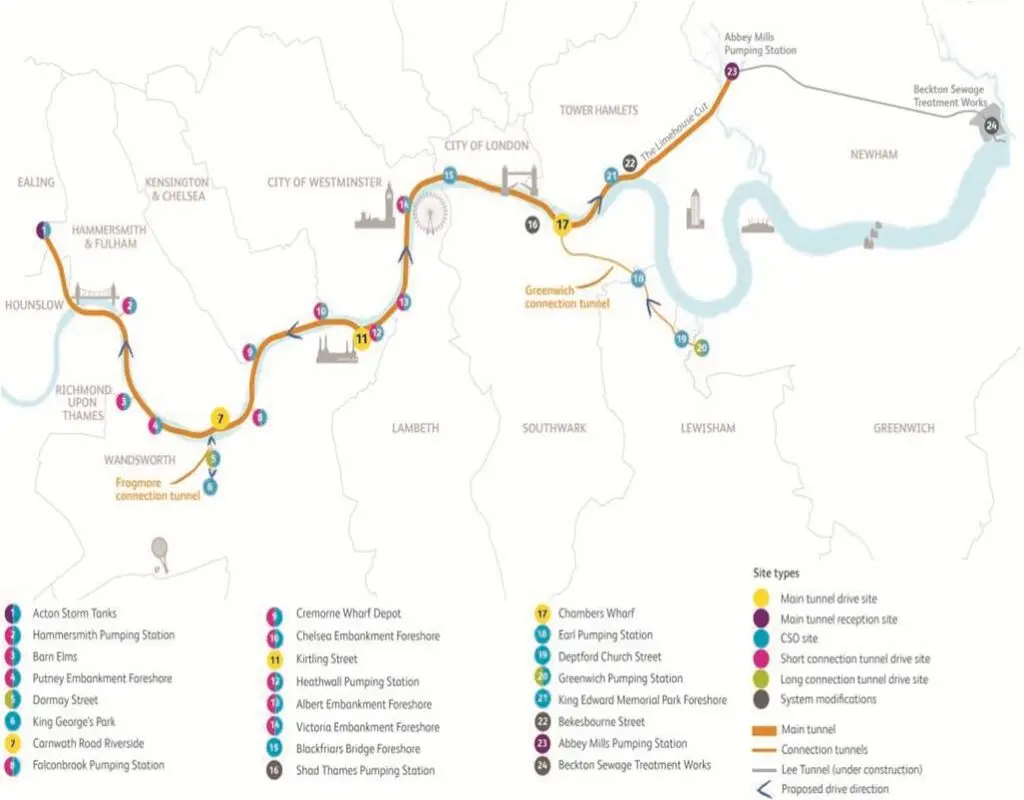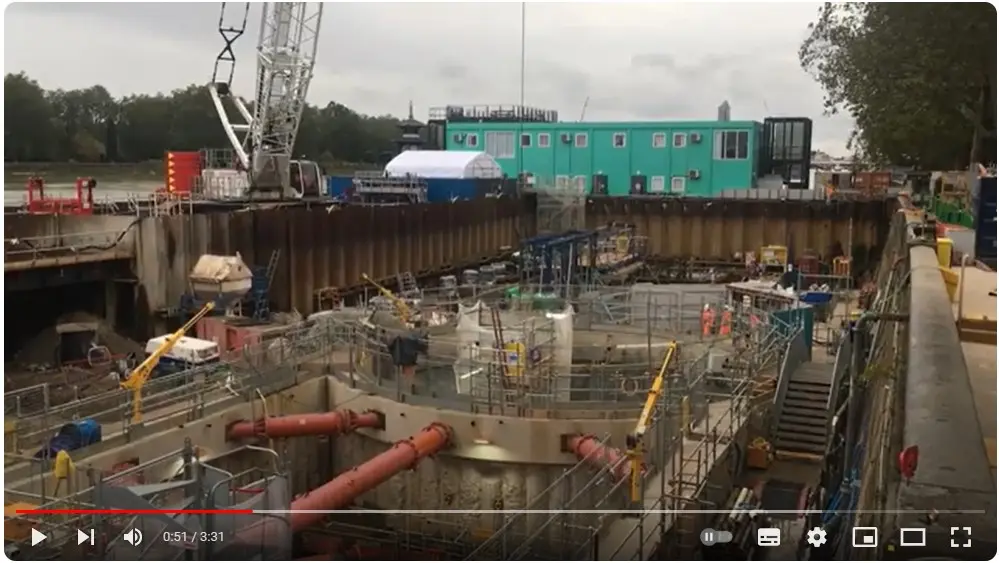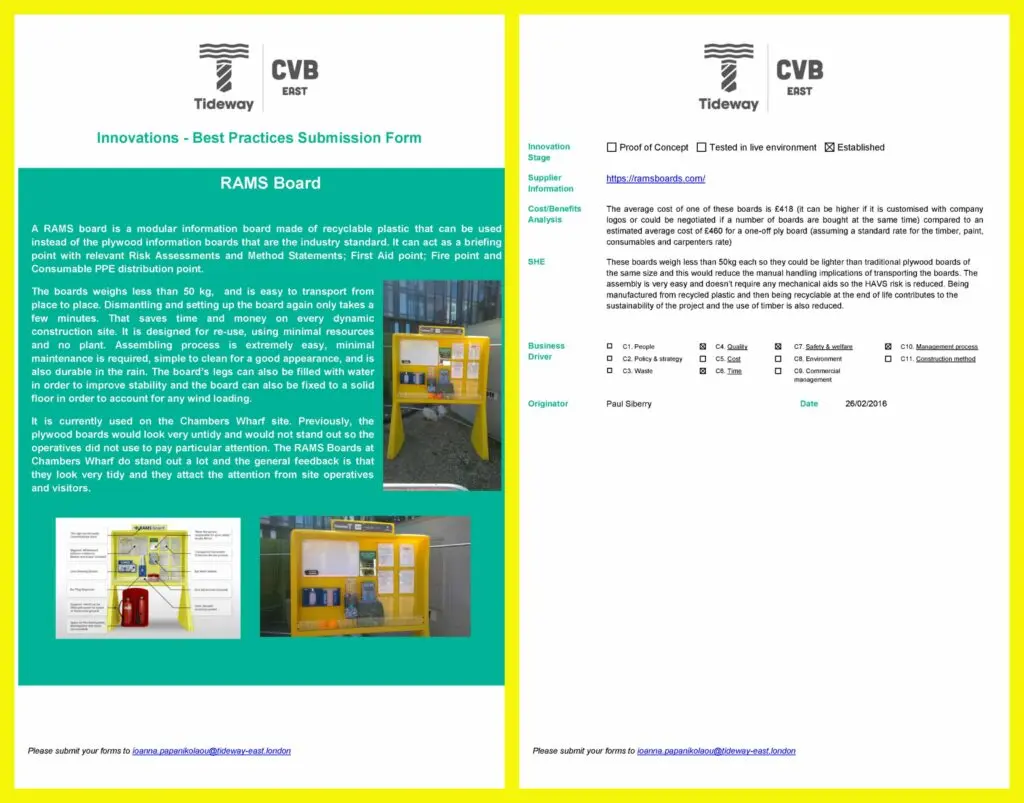Table of Contents
Tideway: Revolutionizing London`s Sewer System with the Super Sewer Project
The Tideway project, a monumental engineering endeavor under the streets of London, is set to redefine urban wastewater management with the construction of a 25km “super sewer” tunnel beneath the River Thames. Initiated to address the limitations of London`s Victorian-era sewer system, this ambitious project is crucial for enhancing the city`s infrastructure, supporting its growing population, and safeguarding the environmental health of the Thames.

| Tideway in snapshoot | Detail |
| Company Name | Tideway (Bazalgette Tunnel Limited) |
| Company Description | A consortium formed to design, build, and finance the Tideway project, with investors including Allianz, Amber Infrastructure, Dalmore Capital, DIF, and others. |
| The Tunnel | A 7.2m diameter tunnel primarily under the River Thames, stretching from Acton in West London to Abbey Mills in East London. |
| Intercepting Points | Designed to intercept overflow from 34 of the most polluting CSOs along the Thames, significantly reducing sewage pollution. |
| Environmental Benefits | Anticipated to substantially reduce sewage pollution in the Thames, enhance water quality, and foster new wildlife habitats. |
| Economic Impact – Job Creation | Generates thousands of jobs across construction, engineering, and related sectors, stimulating London`s economy. |
| Economic Impact – Future Infrastructure | Enhances London`s essential infrastructure, supporting the city`s growth and environmental sustainability. |
| Community Engagement – Emphasis on Local Communities | Actively works with communities along the tunnel`s route to minimize disruptions and ensure mutual benefits. |
| Community Engagement – Education and Legacy | Includes educational programs and the development of new riverside public spaces, contributing to long-term community and environmental benefits. |
The Necessity of Tideway
As London`s population burgeons, the existing sewer system, designed in the Victorian era, struggles to cope with the modern city`s demands. Excessive rainwater frequently overwhelms the system, resulting in untreated sewage discharges into the Thames. Tideway`s mission is to mitigate these overflows, significantly improving the river`s water quality and contributing to the city`s long-term environmental and public health goals.
Project Insights
- Construction Milestones: Launched in 2016, the project is on track for completion in 2025.
- Engineering Marvel: The tunnel, with a diameter of 7.2 meters, extends from Acton in West London to Abbey Mills in East London, closely following the Thames`s path.
- Interception Strategy: By capturing overflow from 34 critical combined sewer overflows (CSOs), Tideway will drastically cut the volume of untreated sewage entering the Thames.
- Environmental Gains: Beyond reducing pollution, the project is poised to enhance aquatic habitats and bolster the river`s biodiversity.
Behind the Scenes: Tideway (Bazalgette Tunnel Limited)
Spearheading the project is Tideway (Bazalgette Tunnel Limited), a consortium formed by industry giants including Allianz, Amber Infrastructure, and Dalmore Capital. This collaboration underscores a significant investment in London`s infrastructure and environmental future.
Economic and Community Impact
- Employment Opportunities: Tideway`s construction phase is a vital source of employment, stimulating local economies and fostering skills development in construction and engineering.
- Infrastructure Legacy: Beyond immediate sewage management improvements, the project lays the groundwork for sustainable urban growth and resilience.
- Community First Approach: Tideway places a strong emphasis on community engagement, ensuring localities are informed, involved, and ultimately benefit from the project`s outcomes.
- Educational Outreach: The project`s legacy programs aim to educate the public on environmental stewardship and create vibrant new public spaces along the river.
In the evolving landscape of urban development and infrastructure projects, the collaboration between Tideway and RAMS boards has emerged as a beacon of innovation, safety, and efficiency. This partnership, especially within Tideway`s specialized areas, has set a new standard in the construction industry, promoting a safer working environment through effective communication and risk management strategies.
The Essence of Collaboration

Tideway, renowned for its ambitious “super sewer” project in London, aims to tackle the city`s overburdened sewerage system. This massive infrastructure project requires not only technical precision but also a paramount focus on safety and environmental sustainability. Enter RAMS boards, with their modular information boards made of recyclable plastic, designed to replace the plywood boards that have been the industry standard. Their use as briefing points, first aid stations, fire points, and PPE distribution points has revolutionized the way information and safety equipment are shared on construction sites.
Strategic Deployment Across Tideway Sites
The implementation of RAMS boards across multiple Tideway sites, including the Tideway East Project Office, Greenwich Pumping Station, Chambers Wharf, Earl Pumping Station, and Deptford Green, demonstrates the versatility and adaptability of these information boards. Positioned in key areas, these boards have become an integral part of Tideway`s commitment to safety, environmental sustainability, and efficiency.
Best Practice and Innovation

The RAMS Board initiative at Chambers Wharf stands as a testament to Tideway`s innovative approach to site safety and information dissemination. The feedback from site operatives and visitors highlights the effectiveness of RAMS boards in capturing attention, promoting tidiness, and enhancing overall safety awareness. The move from plywood to recyclable plastic boards not only represents a step forward in environmental responsibility but also offers a cost-effective solution to the traditional, more labor-intensive alternatives.
Enhanced Communication and Safety
The incorporation of RAMS boards into Tideway`s operational sites has facilitated a more organized and accessible means of communicating essential safety information, including risk assessments, method statements, and emergency contact numbers. The boards` high visibility and modular design ensure that critical information is prominently displayed and easily updated, catering to the dynamic nature of construction sites.
Future Implications
The collaboration between Tideway and RAMS boards underscores a broader shift towards more sustainable, efficient, and safety-oriented practices in the construction industry. As these practices gain traction, they set new benchmarks for project management and safety standards, potentially influencing future infrastructure projects both within the UK and globally.
In conclusion, the partnership between Tideway and RAMS boards epitomizes the intersection of innovation, safety, and environmental stewardship in modern construction projects. By leveraging the strengths of RAMS boards modular information systems, Tideway has not only enhanced the safety and efficiency of its operations but has also contributed to setting new standards in the industry. As this collaboration continues to evolve, it serves as a model for future projects, emphasizing the importance of adaptability, sustainability, and a steadfast commitment to safety.
